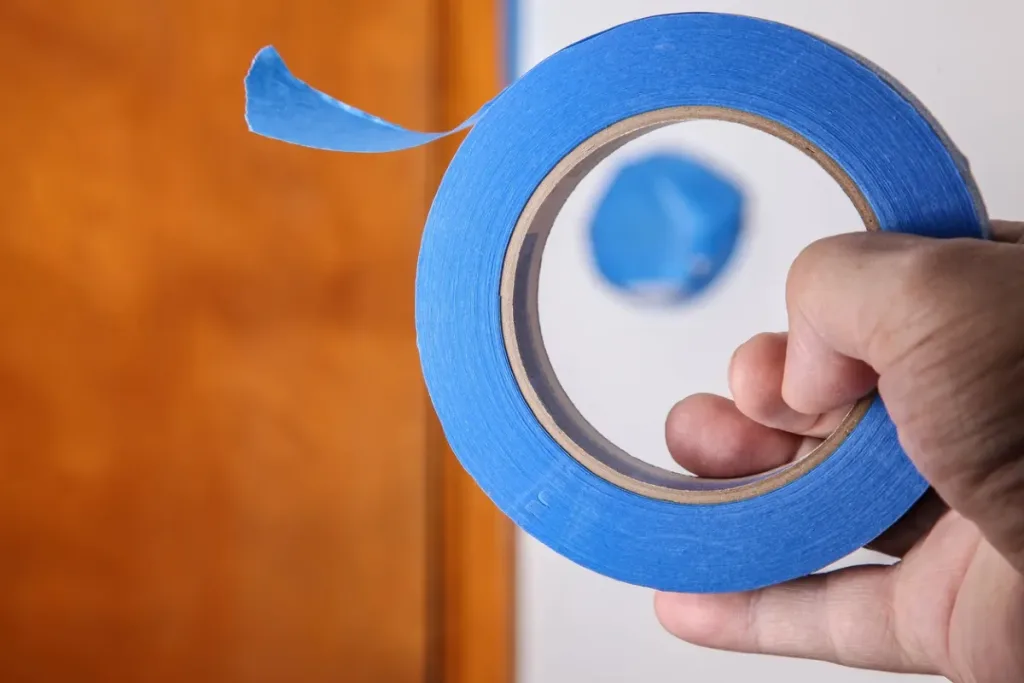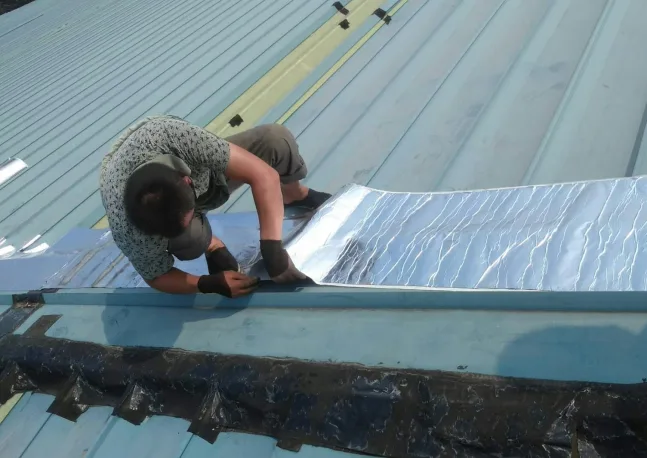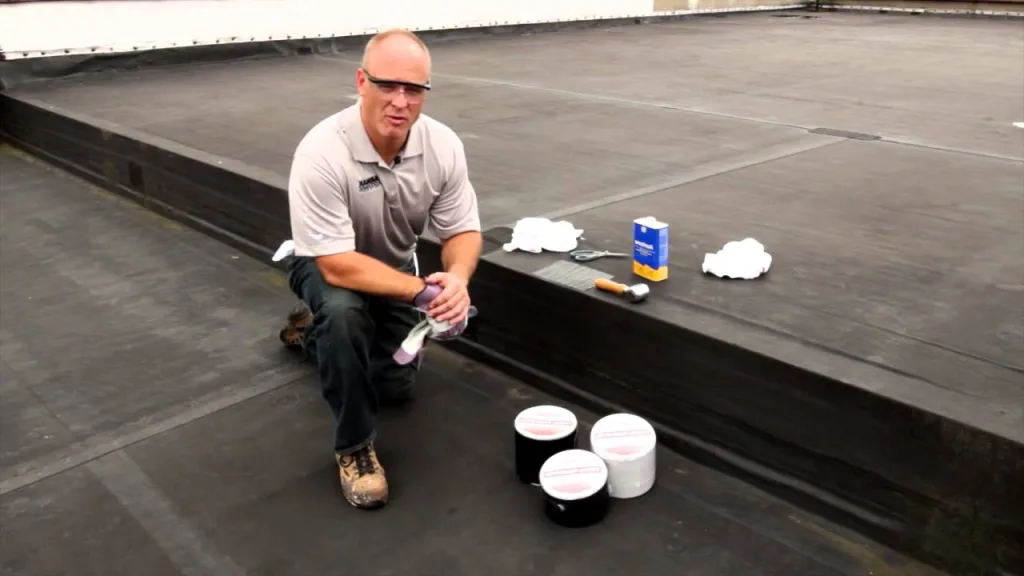Have you ever found yourself staring at a roll of painter’s tape, uncertain if it can do more than just mask edges during a paint job? Well, this versatile tape is much more than a one-trick pony. This comprehensive guide will explore the world of painter’s tape, revealing its many uses beyond just painting, tips for selecting the right kind, and essential knowledge for ensuring clean removal.
- What is Painter’s Tape?
- There’s More Use to Blue Painter’s Tape Than Masking Surfaces
- Tips for Choosing a Tape That Will Stick Without Leaving You Stuck
- How a Masking and Painter’s Adhesive Impacts the Way You Use Them
- What Does “Days of Clean Removal” Mean for Painter’s Tape?
- How Choosing the Right – and Wrong – Performance Masking Tapes Impacts Your Business
- Conclusion
- FAQs
What is Painter’s Tape?
Painter’s tape, often recognized by its distinctive blue color, serves as a crucial tool in painting projects. It’s designed to adhere to surfaces, preventing paint bleed and ensuring crisp, clean lines. Made with a unique adhesive that allows for both strong sticking and easy removal, painter’s tape is adaptable for various applications, from DIY home projects to professional paint jobs.
Unlike traditional masking tape, which can leave behind sticky residue and damage surfaces, painter’s tape is engineered for clean removal, making it ideal for precision work. Its ability to create sharp barriers while being gentle on surfaces makes it a favorite among contractors and DIY enthusiasts alike.
To learn about the difference between painter’s tape and masking tape, please read: Painter’s tape vs Masking tape.
There’s More Use to Blue Painter’s Tape Than Masking Surfaces
In any trade, the tools and materials used play a pivotal role in efficiency and budgeting. Among these, blue painter’s tape stands out as a versatile champion. Let’s explore some lesser-known applications beyond its primary masking function.

Floor Marking
Painter’s tape can easily mark floors, directing traffic or indicating designated spots for equipment. Since it removes cleanly, it won’t leave unsightly residue behind.
Labeling
Keep your job site organized by labeling tools and bins with painter’s tape. It’s also handy for personal items, distinguishing your gear without the worry of sticky peel-off.
Bundling
Use painter’s tape to bundle cords, ropes, or hoses. This keeps your work area tidy, preventing tripping hazards and ensuring safety.
Seaming and Sealing
For protection, use painter’s tape to seam and seal protective materials like poly-sheeting. It applies simply and comes off cleanly, allowing for reuse.
Carton Closure
Wrap painter’s tape around boxes of hardware to keep them secure. This re-sealable functionality helps manage job site materials efficiently.
Bag Sealing
Painter’s tape can effectively tie trash bags closed, using a method called goosenecking, ensuring contents stay secure.
De-fuzzing Paint Roller Heads
Wrap painter’s tape around your fingers and roll it over a new paint roller to remove any lint or fuzz before painting.
Preventing Plywood Tear-Out
By placing painter’s tape over saw lines, carpenters can minimize splintering during cuts, resulting in neater edges.
Creating Clean Caulk Lines
Apply painter’s tape above and below caulk seams to achieve professional-looking, sharp edges. Removing the tape before the caulk dries ensures crisp results.
Don’t Forget Quality Counts
The effectiveness of painter’s tape relies significantly on the quality of its components. Investing in high-quality tape ensures it applies quickly and leaves no residue, making every project successful.
Related article: Additional tips for using painter’s tape.
Tips for Choosing a Tape That Will Stick Without Leaving You Stuck
Selecting the right painter’s tape involves understanding its clean removal features. Clean removal is essential for preventing damage to surfaces and ensuring a professional finish.
Clean Removal Time
The clean removal time is the period painter’s tape remains on a surface before it risks damaging the finish upon removal. Typical removal times range from three to 60 days, depending on the tape’s brand and intended use.
Adhesion Strength
Higher adhesion generally means a shorter clean removal time. For projects requiring longer prep time, consider premium tapes with lower adhesion for durability over several days.
Beige vs. Blue Tape
Beige masking tapes usually have a shorter clean removal time compared to blue painter’s tape. Preferences between these tapes depend on the nature of your tasks, with blue providing more flexibility in application.
Taping Duration
The countdown for clean removal begins upon application. Track how long the tape is in place, not just when painting begins.
Wet vs. Dry Removal
Removing painter’s tape while the paint is still wet assists in maintaining clean lines. This might seem counterintuitive, but it avoids messy edges.
UV-Rated Tape
For outdoor work, opt for UV-rated painter’s tape to protect against sun damage, which can affect adhesion and clean removal.
Don’t Get Stuck with Inferior Tapes
A poor-quality tape may save you money upfront, but the potential for damage and rework can increase costs significantly over time. Always choose high-quality options for a successful outcome.
How a Masking and Painter’s Adhesive Impacts the Way You Use Them
Painter’s and masking tapes are essential for any job that requires precision. Understanding their properties enhances your efficiency on any project.
Tape Composition
Both painter’s and masking tapes include a paper backing, adhesive, and release coat. The adhesive is crucial in determining performance.
Adhesive Quality
A well-formulated adhesive ensures your tape sticks correctly and removes without damaging surfaces. A substandard adhesive can lead to rework and frustration.
Key Adhesive Properties
Understanding four essential adhesive properties helps inform your choices when selecting the proper tape.
Tack
Tack determines how quickly the tape bonds. Painter’s tape has lower tack, ensuring less surface damage upon removal.
Bond
Bond reflects the adhesive’s strength over time. While painter’s tape has lower strength, masking tape holds firmly for diverse tasks.
Temperature Range
Ensure the chosen tape can withstand your job’s temperature without losing adhesion. High-performance tapes can endure more extreme environments.
UV Resistance
Make sure outdoor tapes are UV resistant to handle prolonged sun exposure, which can degrade performance.
Clean Removal
Every tape’s clean removal time is a vital specification. Ensure you know your tape’s limits to maintain efficiency.
What Does “Days of Clean Removal” Mean for Painter’s Tape?
Understanding clean removal timelines is vital for successful use of painter’s tape. This period is critical for both achieving professional-level finishes and preventing damage.
Clean Removal Basics
Clean removal refers to taking off tape without harming the underlying surface or leaving adhesive residue behind. The clock starts once you apply the tape.
Duration Variation
Each painter’s tape has a clean removal range, with some lasting up to three days, while others extend to 60 days. Always consult product specifications to determine the correct timeframe.
Sunlight’s Impact
Indoor painting in sunlight can reduce clean removal times, due to the breakdown of adhesives. Always choose UV-resistant tape for outdoor projects.
To learn how to remove tape residue on metal surface, please read this article.
How Choosing the Right – and Wrong – Performance Masking Tapes Impacts Your Business
In the industrial coatings sector, the right tools and materials are paramount for achieving exquisite results. Choosing optimal tape can drive your business’s success.
Workflow Disruptions
Using inferior masking tape can disrupt workflows, leading to costly delays. Ensure your teams have reliable products to keep productivity high.
Surface Damage
Proper tape protects surfaces during application. Using low-quality tape risks damage, which can be expensive to rectify.
Reputation Risks
Tape failures can tarnish your company’s reputation. Customers expect quality, and anything less can lead to negative reviews that impact future business.
Select Quality Tapes
Quality performance masking tapes adhere well, resist solvent degradation, and remove cleanly, thus saving time and enhancing results.
Deciding on premium tape products is selecting excellence for your company. Align yourself with reputable manufacturers for consistent, reliable results.
Conclusion
In summary, painter’s tape is an indispensable tool that transcends its primary function. Its versatility in various applications, combined with effective adhesive properties, makes it essential for professional and DIY projects alike. At Fonitaniy Tape, we have been an adhesive solutions provider for over 15 years, innovating state-of-the-art painter’s and masking tapes to meet diverse needs. Invest in quality tape to ensure successful and efficient project outcomes.
FAQs
What are the benefits of painter’s tape?
Painter’s tape provides clean edges, easy removal, and less surface damage during painting.
Can I use painter’s tape outdoors?
Yes, but choose UV-resistant painter’s tape for outdoor projects.
How long can I leave painter’s tape on?
Clean removal times vary by product, typically from three to 60 days.
What’s the difference between painter’s tape and masking tape?
Painter’s tape is designed for painting applications; masking tape is better for general holding, binding, and repairs.
Is it necessary to remove painter’s tape while the paint is wet?
Yes, it prevents paint from bonding with the tape for cleaner edges.
How do I choose the right painter’s tape?
Look for quality specifications, clean removal times, and application suitability to find the best tape for your needs.




